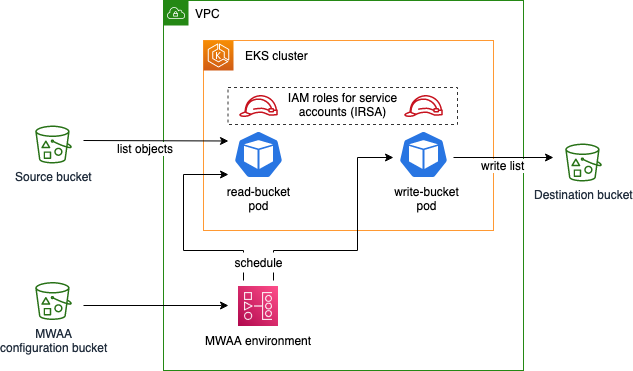AWS Big Data Blog
Category: Technical How-to
Query big data with resilience using Trino in Amazon EMR with Amazon EC2 Spot Instances for less cost
New enhancements in Trino with Amazon EMR provide improved resiliency for running ETL and batch workloads on Spot Instances with reduced costs. This post showcases the resilience of Amazon EMR with Trino using fault-tolerant configuration to run long-running queries on Spot Instances to save costs. We simulate Spot interruptions on Trino worker nodes by using AWS Fault Injection Simulator (AWS FIS).
Migrate an existing data lake to a transactional data lake using Apache Iceberg
A data lake is a centralized repository that you can use to store all your structured and unstructured data at any scale. You can store your data as-is, without having to first structure the data and then run different types of analytics for better business insights. Over the years, data lakes on Amazon Simple Storage […]
Apache Iceberg optimization: Solving the small files problem in Amazon EMR
Currently, Iceberg provides a compaction utility that compacts small files at a table or partition level. But this approach requires you to implement the compaction job using your preferred job scheduler or manually triggering the compaction job. In this post, we discuss the new Iceberg feature that you can use to automatically compact small files while writing data into Iceberg tables using Spark on Amazon EMR or Amazon Athena.
Non-JSON ingestion using Amazon Kinesis Data Streams, Amazon MSK, and Amazon Redshift Streaming Ingestion
Organizations are grappling with the ever-expanding spectrum of data formats in today’s data-driven landscape. From Avro’s binary serialization to the efficient and compact structure of Protobuf, the landscape of data formats has expanded far beyond the traditional realms of CSV and JSON. As organizations strive to derive insights from these diverse data streams, the challenge […]
Process and analyze highly nested and large XML files using AWS Glue and Amazon Athena
In today’s digital age, data is at the heart of every organization’s success. One of the most commonly used formats for exchanging data is XML. Analyzing XML files is crucial for several reasons. Firstly, XML files are used in many industries, including finance, healthcare, and government. Analyzing XML files can help organizations gain insights into […]
Build event-driven architectures with Amazon MSK and Amazon EventBridge
Based on immutable facts (events), event-driven architectures (EDAs) allow businesses to gain deeper insights into their customers’ behavior, unlocking more accurate and faster decision-making processes that lead to better customer experiences. In EDAs, modern event brokers, such as Amazon EventBridge and Apache Kafka, play a key role to publish and subscribe to events. EventBridge is […]
Using Experian identity resolution with AWS Clean Rooms to achieve higher audience activation match rates
This is a guest post co-written with Tyler Middleton, Experian Senior Partner Marketing Manager, and Jay Rakhe, Experian Group Product Manager. As the data privacy landscape continues to evolve, companies are increasingly seeking ways to collect and manage data while protecting privacy and intellectual property. First party data is more important than ever for companies […]
Manage your workloads better using Amazon Redshift Workload Management
Amazon Redshift workload management (WLM) helps you maximize query throughput and get consistent performance for the most demanding analytics workloads by optimally using the resources of your existing data warehouse. This post provides examples of analytics workloads for an enterprise, and shares common challenges and ways to mitigate those challenges using WLM. We guide you through common WLM patterns and how they can be associated with your data warehouse configurations. We also show how to assign user roles to WLM queues and how to use WLM query insights to optimize configuration.
Set up fine-grained permissions for your data pipeline using MWAA and EKS
This blog post shows how to improve security in a data pipeline architecture based on Amazon Managed Workflows for Apache Airflow (Amazon MWAA) and Amazon Elastic Kubernetes Service (Amazon EKS) by setting up fine-grained permissions, using HashiCorp Terraform for infrastructure as code.
Stitch Fix seamless migration: Transitioning from self-managed Kafka to Amazon MSK
Stitch Fix is a personalized clothing styling service for men, women, and kids. In this post, we will describe how and why we decided to migrate from self-managed Kafka to Amazon Managed Streaming for Apache Kafka (Amazon MSK).









